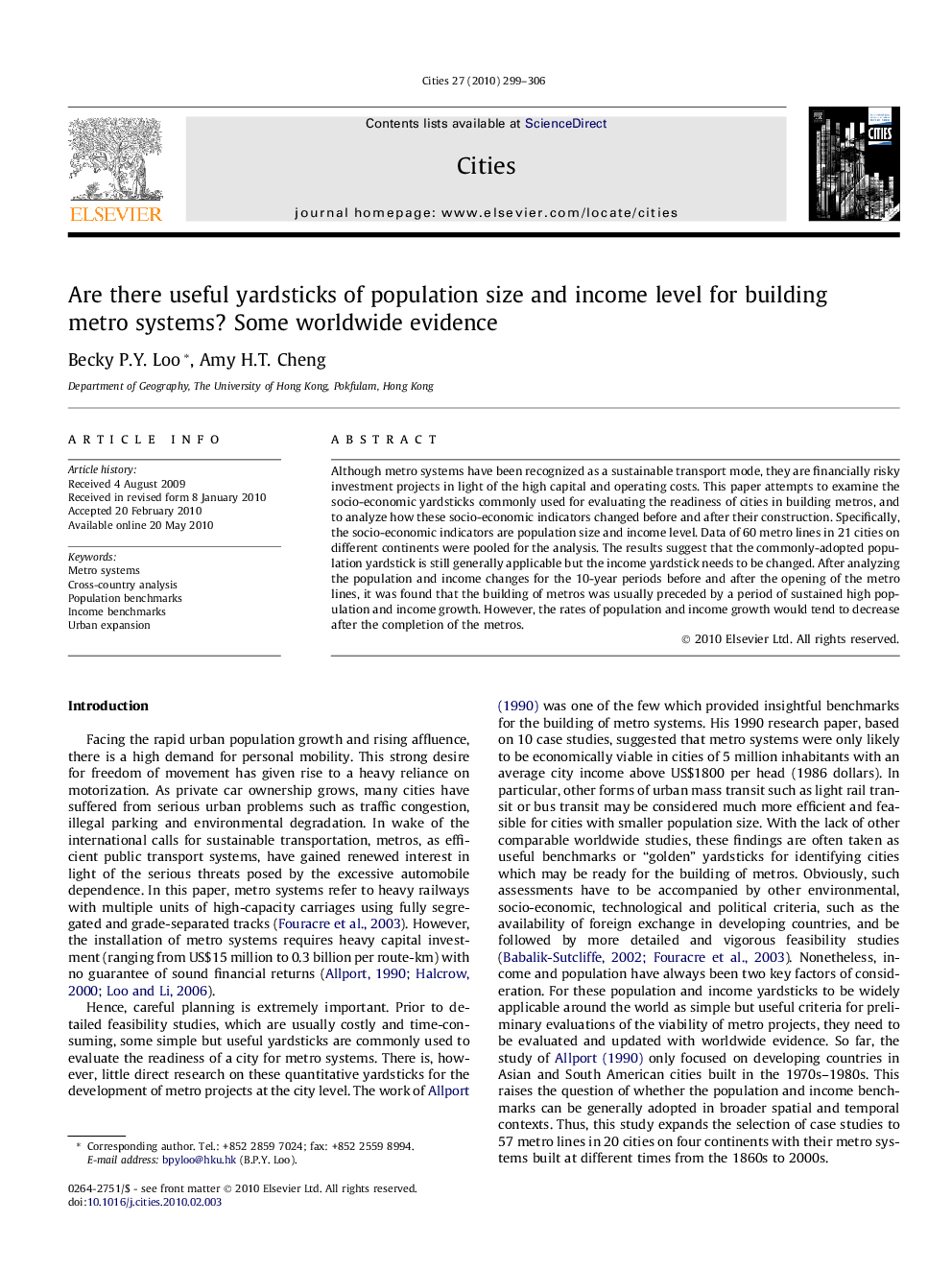| Article ID | Journal | Published Year | Pages | File Type |
|---|---|---|---|---|
| 1008745 | Cities | 2010 | 8 Pages |
Although metro systems have been recognized as a sustainable transport mode, they are financially risky investment projects in light of the high capital and operating costs. This paper attempts to examine the socio-economic yardsticks commonly used for evaluating the readiness of cities in building metros, and to analyze how these socio-economic indicators changed before and after their construction. Specifically, the socio-economic indicators are population size and income level. Data of 60 metro lines in 21 cities on different continents were pooled for the analysis. The results suggest that the commonly-adopted population yardstick is still generally applicable but the income yardstick needs to be changed. After analyzing the population and income changes for the 10-year periods before and after the opening of the metro lines, it was found that the building of metros was usually preceded by a period of sustained high population and income growth. However, the rates of population and income growth would tend to decrease after the completion of the metros.
